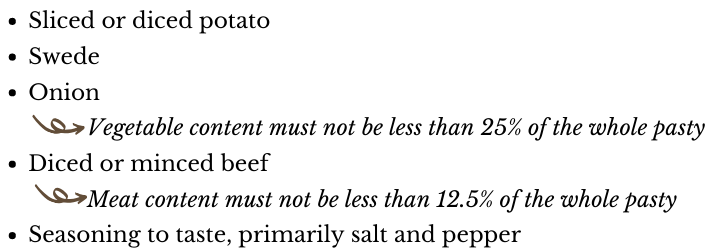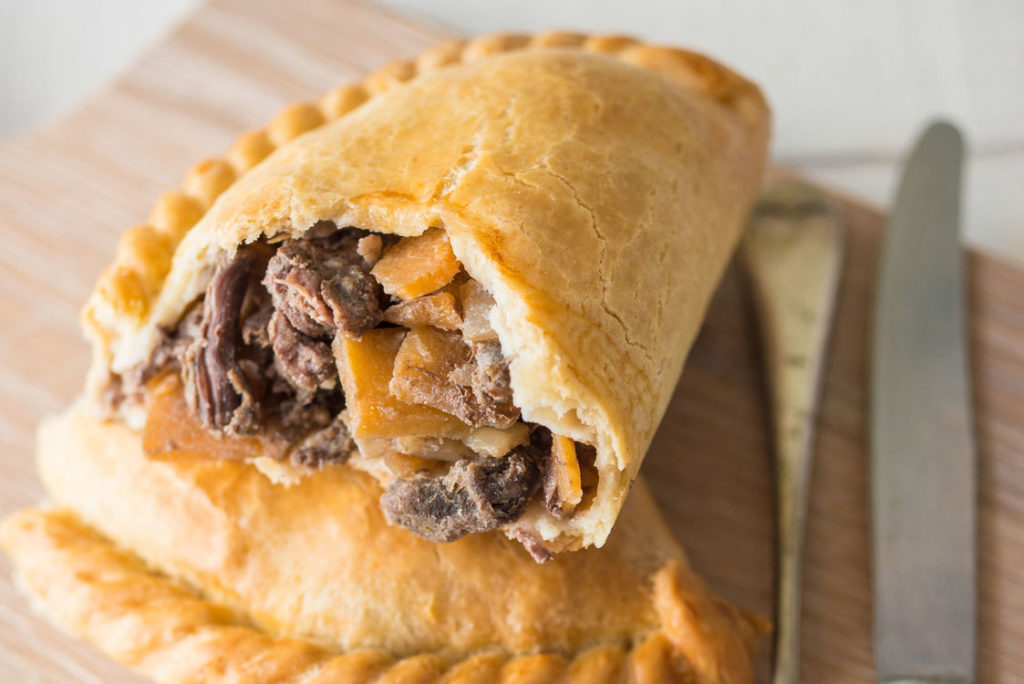The Cornish Pasty plays a vital role within the culinary heritage of Cornwall. It is an integral part of the tourist experience for many people and the production of Cornish Pasties makes a significant contribution to the Cornish economy. At least 120 million Cornish Pasties are made each year and nearly 2000 people work in pasty production.
The cultural link between the pasty and Cornwall is as strong today as it was 200 years ago and the significance of this dish was celebrated in 2011 when the European commission awarded it "protected geographical indication" (PGI) status. This is important as it protects regional foods that have a specific quality, reputation or other characteristics that are attributable to that area. In this blog post, we delve into the fascinating history behind this regional delicacy and recommend some of our delicious Cornish Pasty hampers so that you too can experience a “proper pasty”.
In order to be named a genuine Cornish Pasty, it must be made in Cornwall, thanks to its PGI status. The pastry used can be shortcrust, rough puff or puff, however, it must include these mandatory uncooked filling ingredients:

Once sufficiently filled, the pasties are formed into a ‘D’ shape and then crimped. The traditional process of crimping seals the pasty with the resulting crimped edge sitting to one side.

They are slow-baked to ensure that the flavours from the raw ingredients are maximised with the raw beef and vegetables creating a deliciously balanced and naturally savoury taste throughout the product
The word pasty is said to have derived from Medieval French (pasté or pasta) and they have been mentioned in cookbooks since the 14th Century. The pasties popularity in England can be traced back to the reign of Edward III when it was devoured by the rich upper classes and royalty. The fillings included venison, beef, lamb and seafood like eels, flavoured with rich gravies and fruits. This is a far cry from the Cornish Pasty that we know and love today. In the 17th and 18th centuries, the pasty became a staple part of the diet for most Cornish miners, fishermen and farmers.
The pasty became an all-in-one meal with one half being filled with meat and the other half a sweet or fruity dessert. The crimped edge also served a purpose, as a handle for the workers who had less than sterile hands after a hard day's work. The Cornish Pasty was the original, portable, easy-to-eat convenience food!
We have a fantastic selection of hampers which pay tribute to the humble Cornish Pasty. Take a step back in time with our Classic Tin Miner’s Lunch Hamper. This hearty treat includes high-quality favourites that hark back to rich Cornish history including two pale ales and two medium steak pasties.
Our Ultimate Cheese Lover's Hamper contains some of the best cheese-based snacks from across Cornwall. Including all essential ingredients for a savoury cheese tea as well as some delicious pasties, this hamper will hit the spot every time.
Find the true way to a Cornishman's heart with this delicious pasty hamper, which includes two traditional pasties as well as some inspired crisps and a couple of bottles to wash it all down with.
Our full range of Cornish hampers can be found here and for more interesting Cornish food and drink history, check out our other blog posts which can be found here.